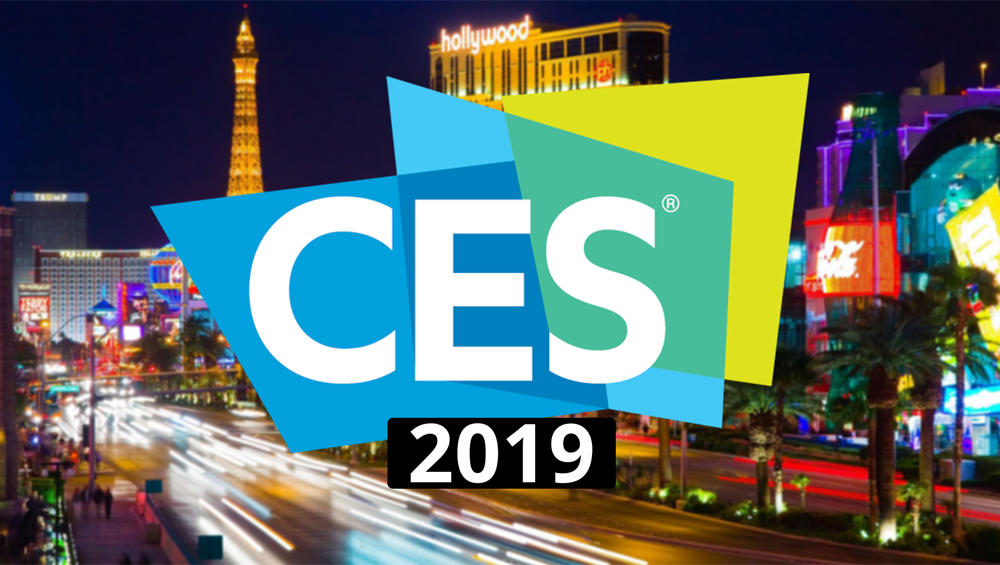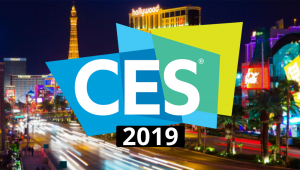
See It At CES: 3.0, 5G, IoT, Connected Cars

 ATSC 3.0 may be far from top-of-mind for most of the 180,000-plus attendees of the Consumer Electronics Show next month, but a cadre of broadcasters hopes to move its needle.
ATSC 3.0 may be far from top-of-mind for most of the 180,000-plus attendees of the Consumer Electronics Show next month, but a cadre of broadcasters hopes to move its needle.
The Pearl TV group, Sinclair’s ONE Media and others will decamp to the annual Las Vegas event from Jan. 8 to 11 with a remit to convince manufacturers of next-gen TV’s viability. They’ll have their work cut out for them, trying to be a signal in the noise of some 4,500 exhibitors sprawling across the Las Vegas Convention Center (LVCC) and two other venues.
“You need a game plan,” said Brian Markwalter, SVP of research and standards for the Consumer Technology Association, which mounts the show.
So, with input from leading broadcast technologists, trade organizations and consultants, consider this a tool for broadcasters to help make that plan amid CES’s chaos.
ATSC 3.0
“There will be lots of behind the scenes conversations about Next Gen TV, including private demonstrations,” said Sam Matheny, CTO and EVP of NAB, via email. “There is good traction, and momentum is building as evidenced by the announced trials in Phoenix with Avis Budget Group.”
Among the organizations leading those conversations will be the Pearl TV group of leading broadcasters. Anne Schelle, its managing director, said Pearl and its Phoenix model market partners will be at CES in anticipation of a 2020 service introduction.
“We’ll be meeting with various ecosystem partners at CES, reaching out to consumer device manufacturers, automotive manufacturers and other players to share our service requirements and plans resulting from the Phoenix tests,” she said via email. “Our entire focus is on the commercialization of the very flexible ATSC 3.0 standard.”
Mark Aitken, VP of advanced technology at the Sinclair Television Group and president of its ONE Media innovations group, will be showing its software-defined radio chip at the Wynn.
“This is the first public demonstration of the ONE Media next-gen chip set,” Aitken said. “It’s a chip that will support every broadcast world standard.”
Aitken said the new chip can adjust to 14 million different combinations of the waveform and has been designed to evolve as the standard evolves, thus mitigating worries of obsolescence.
It’s also designed for low energy consumption, meaning that it is suitable for portable and mobile devices, he said, noting ONE Media will have a USB version of the chip ready for next year’s Mobile World Congress in Barcelona.
Del Parks, SVP and CTO of the Sinclair Television Group, said this year’s efforts will build on several years’ worth of demonstrations at CES aiming toward a paradigm shift in how broadcast companies are seen.
“We’re trying not to define ourselves as broadcasters,” he said. “We’re a media technology company. TV broadcast is one service we can provide, but there are datacasting services that we can now provide with 3.0. We’re in the business of delivering content to every device — a TV set, an iPad, a computer screen or the back seat of a car.”
But not everyone is so bullish that this will be ATSC 3.0’s breakthrough year. Shelly Palmer, CEO of The Palmer Group, is among the skeptics. “This has been promised for a while,” he said. “There will be a lot of people talking it up again. It’s sort of feeling a little boy-who-cried-wolf, but maybe this is the year.”
5G, Connected Cars And Voice
Palmer, who leads private floor tours for executives at CES, said 5G will be one of the most important technologies for attending broadcasters to investigate.
“If I’m going to CES this year, I’m trying to explore 5G to its greatest extent,” he said. “I’m trying to understand since they’re not making 2K sets anymore and they’re already on to 8K, what am I going to do about it.
“This is the question every broadcaster has to ask themselves: Are they going to be the victim of demand-side disruption that will mimic what happened when Apple brought out the iPhone and everybody had a Blackberry?”
They’ll also hear from two major keynoters on the subject. LG’s President and CTO Dr. I.P. Park will speak on Monday, Jan. 7, at 6:30 p.m. at the MGM’s Park Theater; and Verizon’s CEO Hans Vestberg will speak on Tuesday, Jan. 8, at 4 p.m. at the Venetian’s Palazzo Ballroom.
Meanwhile, the LVCC’s North Hall will host CES’s automotive hub, a segment of the show that has fast become one of its most important subsets. Most major auto manufacturers will have a presence there, with some debuting new vehicles featuring the latest in connected technology along with demos of self-driving cars happening outside of South Hall.
NAB’s Matheny sees connected cars as among the most pressing consumer technologies at the 2019 show and for broadcasters stemming from radio’s long dominance of in-vehicle entertainment.
“With the increased connectivity that is starting to emerge, we believe there are new opportunities to build on that strength and grow audience and engagement,” he said. “Additionally, and especially when thinking about autonomous vehicles, there are opportunities for television broadcasters as they deploy next-gen TV.”
Sinclair’s Parks sees CES as an opportunity for broadcasters and auto manufacturers to do a mutual needs analysis in view of ATSC 3.0.
“3.0 is extremely receivable and extremely mobile,” he said. “The car industry is very interested in the capabilities of 3.0.”
But Palmer throws some cold water on the auto side of that interest, seeing the need for putting broadcast capabilities into a car’s video monitors as unnecessary when Bluetooth or a cable can already connect a phone or tablet to a vehicle’s OS.
“Have you guys heard of an iPad?” he said.
NAB clearly doesn’t agree, throwing the bulk of its weight at the show into automotive-related events.
It’s sponsoring a panel, “The Future of In-Vehicle Entertainment” on Tuesday, Jan. 8, at 10:15-11:15 a.m. looking at the prospects of automotive and broadcast collaborations on product design, especially in the age of the self-driving car.
It’s also sponsoring a reception for the GENIVI Alliance, a collaborative community of automakers and their suppliers developing open software for in-vehicle infotainment and the connected car.
(NAB’s board doesn’t meet at CES, although its radio and TV technology committees do.)
Matheny said he’s also interested in the continued evolution of voice solutions enabling new ways of navigating and interacting with content. That technology will have a heavy presence at the show starting with Google in front of the LVCC’s Central Hall.
CTA’s Markwalter said voice integrations like Google Home, Alexa and others will be all over the show floor, and their prevalence ought to resonate strongly with attending broadcasters.
“We’re never going back from this now,” he said. “If you don’t have a plan for how your business is going to thrive in a voice interface world, you need to get one soon.”
Conference Programming And Technologist Tips
In the face of such an ocean of exhibitors, it’s easy to forget that there’s also a multiple-tracked conference at CES. Several sessions stand out as worth broadcasters’ attention.
Two are regulatory: FCC Chairman Ajit Pai will be in conversation with CTA President-CEO Gary Shapiro on Tuesday, Jan. 8, at 1:30-2 p.m. in the North Hall. FCC Commissioner Brendan Hall and FTC Commissioner Rebecca Slaughter will be part of a roundtable discussing regulatory and policy issues related to infrastructure, 5G, privacy, accessibility, the internet of things, regulatory reform and disruptive innovation on Tuesday, Jan. 9, at 3:30-4:30 p.m. in the North Hall.
A session on “New Rules of Engagement in the Disrupted Age” on Wednesday, Jan. 9 from 11 to 11:40 a.m. in the Aria promises tips for a smart omnichannel engagement strategy, particularly on OTT. And speaking of OTT, the platform’s presence itself has become so woven into CES that its organizers can no longer even say how many of its exhibitors are “OTT companies.”
If all else fails, broadcasters might take some 10,000-foot-level advice from their technologist peers who navigated many a CES.
Jeff Morris, SVP of operations and technology for NBCUniversal Owned Television Stations, and David McKinnon, VP of operations and technology there, said via email that they’re interested in “anything that has a screen.”
They’ll also be looking for wearables and mobile devices where they can potentially serve content and the drones and camera/selfie gear that can help their teams with newsgathering in the field along with the content consumption opportunities that may be coming online with self-driving cars.
And Tish Graham, VP broadcast technology at the ABC Owned Television Stations Group, had some general pointers for broadcasters wary of getting lost in the chaos.
“It’s more about a high-level look at what the consumer is looking at,” she said. “What do the consumer manufacturers think that consumers are going to be interested in in the next six months to a year?”
































Comments (1)
Olivia701 says:
September 1, 2022 at 2:20 am
I’ve been to similar events and it’s a great way to learn how IoT makes products and technologies better and more efficient. Not so long ago, our company began to cooperate with the team of the site https://lembergsolutions.com/internet-things to implement some IoT solutions for our sensors